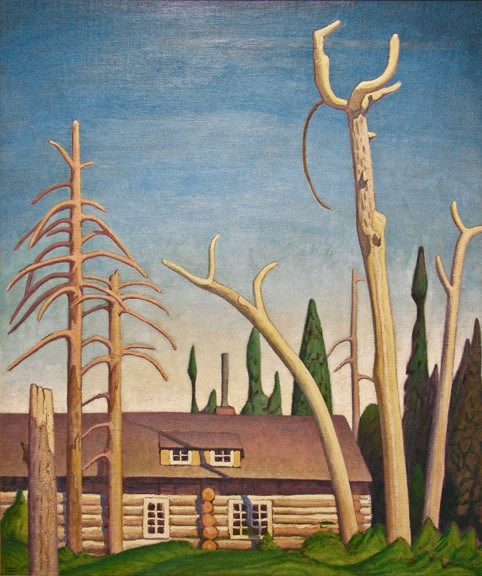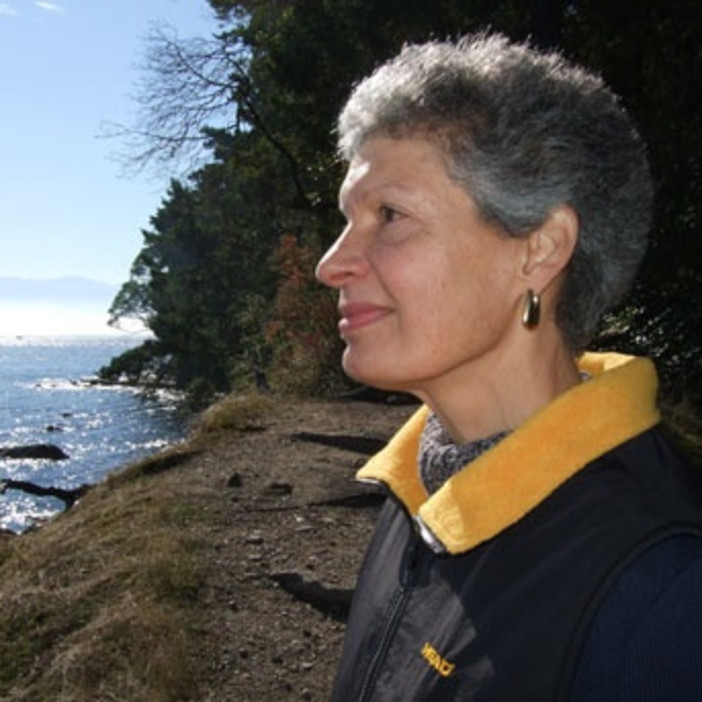Lawren Harris Masterpiece For Sale at Klinkhoff

Lawren Stewart Harris, LL.D., R.C.A. (1885-1970) Log Cabin, c. 1925 Oil on canvas, 50 x 42 in., 127.0 x 106.7 cm
Provenance: Estate of Lawren Harris; Galerie Walter Klinkhoff, Montreal, c. 1972; Private Collection
Exhibitions: Art Gallery of Toronto, 8-31 May 1926, Exhibition of the Group of Seven, no. 14; National Gallery of Canada and Vancouver Art Gallery, 1963, Lawren Harris Retrospective, no. 13; Galerie Walter Klinkhoff, c. 1972
Literature: “Northern Camp,” Canadian Forum, 6:61 (October 1925), p. 17; Doris Speirs (Mrs. Gordon Mills), “Northern Painting No. 6 Log House 42 x 50,” List of paintings of Lawren Harris, 1936, “Large Pictures,” Book #I, Ms. Joan Murray Artists’s Files, Lawren Harris, Robert McLaughlin Gallery, Oshawa).
In 1924, Lawren Harris travelled for the first time to the Rocky Mountains and in August and September of that year sketched in and around Jasper Park, accompanied by A.Y. Jackson. The subject of this handsome canvas of a peaceful cabin scene set in the midst of a stretch of scrub, woods and forest likely calls upon Harris’s sketches of his visit to Jasper. If the place Harris painted is of Jasper, it would probably not have been of the Jasper Lodge where he stayed, but of a scene from his travels in the area. He and Jackson either hiked or rode on horseback southeast from Jasper to Maligne Lake, east to the Collins Range, and then north about twenty miles to the west of the Arthabaska River in the Tonquin Valley (see Peter Larisey, Light for a Cold Land (1993), p. 100).
The painting draws much of its power from Harris’s commanding grasp of space and narrative in which the whole prevails over details. The austere vision of the skeletons of dead trees set in front of the cabin is enhanced by the cerulean blue sky which shades to ultramarine and darker tones at the top of the canvas. Harris would have introduced the blue tree shadows which fall on the cabin to bind the painting together spatially. In a sketch of the scene, reproduced in the Canadian Forum, 6:61 (October 1925), p. 17, under the title Northern Camp, and likely the one he used as the basis for this painting, the cabin has larger window elements and no shadows fall from the trees onto the house.
Doris Speirs (then Mrs. Gordon Mills) recorded the painting as “Northern Painting No. 6 Log House 42 x 50” in the list of paintings of Lawren Harris she prepared in 1936. She also sketched the work and her sketch appears in the book of drawings she prepared to accompany the list (“Large Pictures,” Book #I, Ms., Joan Murray Artists’s Files, Lawren Harris, Robert McLaughlin Gallery, Oshawa). Her sketch, like the Canadian Forum reproduction, does not show any shadows on the house. In his work of the 1920s, Harris was moving away from what he called the “decorative” phase of his early work and embracing modernism. This work tracks an arc from the heavy, lush application of paint he used in his earlier scenes of Canada under snow to the more sculptural treatment he applied to the work which resulted from his travels to the north shore of Lake Superior.
These trips began several years earlier than his trips to the Rockies, in 1921. He loved the rugged, wild landscape of both places and painted them often. They were favourite painting places for him and fulfilled his desire for a simplified, pared-down land, with an effect of grandeur. The Rockies in particular offered him the subject of the mountains with their impressive scenery and sublime order. At the time he painted this work, Harris was becoming increasingly involved with theosophy. In March of 1924, he formally joined the Toronto Theosophical Society. In his paintings of this period, he was beginning to think about conveying a subtle lesson about nature and the supernatural rolled into one, perhaps even to convey the spiritual essence of the scene through the use of light.
In works such as Above Lake Superior, c. 1922, his use of light might have suggested to him something about theosophy, which adherents believe is represented by the white light of pure truth. In Log Cabin, in the clear light of the north, some of the dead trees stand tall while others strive upwards – Harris may have thought of the effect as something of a metaphor for his own spiritual searching. Harris used colour in the painting in a specific, ambitious and intelligent way. The tones create a mood of great calm. Harris explained to an interviewer that what was important in the new art of the Group of Seven was not brightness, but “purity” of tone, (“Canada Has Given Birth to a New and National Art,” Star Weekly (Toronto), January 26, 1924). By “pure tone,” he meant, he said, “a tone in which everything makes a significant contribution to the whole.” The colour values in this painting are carefully balanced, and the composition strongly focused. Through his use of pure tones, simplified forms, and powerful composition, Harris hoped to inspire the viewer to penetrate the ephemera of everyday and awaken to the grandeur of the eternal.
“He has … chosen to show Canada to Canadians by… areas of clean clear dominating atmosphere or light…Whatever Lawren Harris thinks, he puts into his colors…If Lawren Harris is preaching, he is first showing Canada in its primal strength and glory,” wrote a reviewer in 1927 (“Lawren Harris, of the School of Seven,” Toronto Telegram, April 22, 1927). The painting is a powerful icon of the Canadian north and conveys the lively impression of being both true to Harris and his aims in paint and a lesson in the birth of the modernist movement in Canada. Clearly, Lawren Harris regarded Log Cabin as an important work in his oeuvre – he selected it, along with several other works, for exhibition from May 8th to 31st in the Group of Seven show of 1926.
As Charles C. Hill points out, this is confirmed by a caricature drawing after it in R.C. Reade, “They Have Taken Photography and Wrung its Neck,” Toronto Star Weekly, 22 May 1926. In 1963, it was shown in Ian McNairn’s 1963 Lawren Harris Retrospective at the National Gallery of Canada, Ottawa and Vancouver Art Gallery as no. 13, and incorrectly titled and dated Algonquin Park (1919-20). Harris was suffering from the effects of a stroke at the time, and he or his wife Bess, could have been the source of the error, as Hill writes. The painting was then in the collection of the artist.
Under the title and date of the 1963 show, Galerie Walter Klinkhoff acquired the painting nearly forty years ago, in around 1972. Sold to a private collection, it has been off the market from that day to this. Hill points out that the canvas relates in certain ways to Spring on the Oxtongue River of 1924 exhibited in the 1925 Group show (see the reproduction in his Group of Seven Art for a Nation (1995) p.156, but he questions whether Harris didn’t rework the painting after 1926 as in surface and design it seems to him closer to Summer Cottage, Grimsby Park (formerly in the L.P. Harris’ collection) exhibited in the 1930 Group exhibition. However, the work as it now appears seems all of a whole. The result in the painting is a crisp but sensuous look, easy to see, but one which reflects the intensity of Lawren Harris’s inner life as well as the way he approached the northern landscape at an important moment in his work.
Joan Murray & Galerie Walter Klinkhoff © 2010





